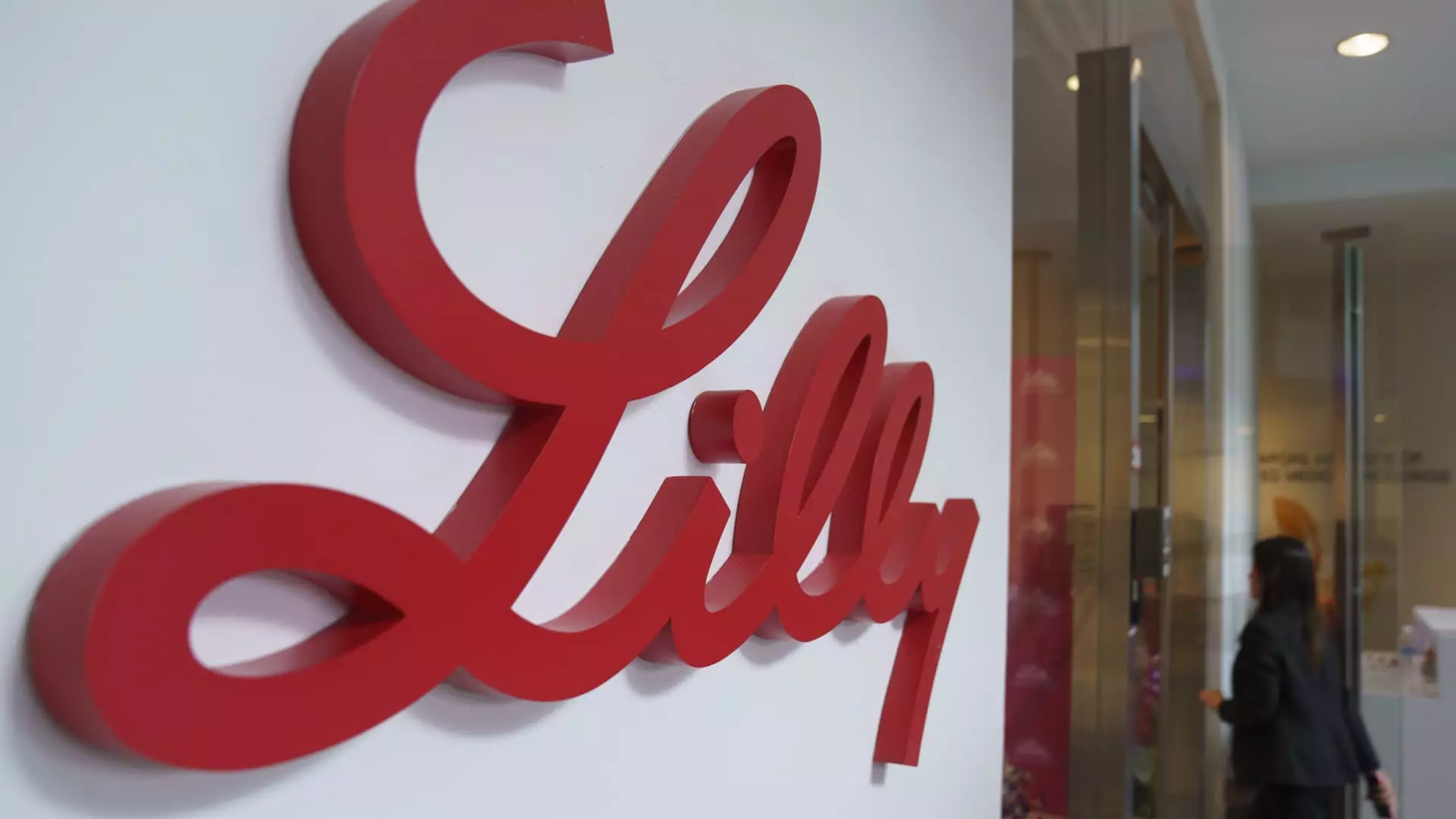Eli Lilly has just turned heads with its latest financial report, showcasing revenue and earnings that exceeded analysts’ expectations, buoyed primarily by the surging sales of its diabetes and weight loss medications. However, the pharmaceutical giant is not without its challenges. A strategic miscalculation in its recent acquisition of an oral cancer medication from Scorpion Therapeutics has resulted in a substantial $1.57 billion charge. This has prompted the company to lower its full-year earnings guidance significantly, from an optimistic range of $22.50 to $24 per share down to a more conservative $20.78 to $22.28. The very nature of this financial maneuver is a vivid reminder of how quickly the pharmaceutical landscape can shift, and how crucial it is for executives to exercise foresight.
What adds layers to Eli Lilly’s narrative is that while its revenue estimates reached $12.73 billion—up a stunning 45% from the previous year—the lower profit guidance indicates a volatile market climate. This juxtaposition raises questions about the long-term viability of relying heavily on hit-or-miss drug approvals and acquisitions as a way to maintain momentum. While the sales of Mounjaro and Zepbound may be painting a rosy picture for now, the broader implications of financial setbacks like these serve as a cautionary tale.
The Trump Effect: Tariffs and Pharmaceutical Manufacturing
The ongoing impact of political decisions cannot be overlooked in this equation. Eli Lilly’s guidance includes considerations around the existing tariffs from the Trump administration, which seem to be intertwined with emerging manufacturing investments in the U.S. During a CNBC interview, CEO Dave Ricks expressed cautious optimism about these tariffs, suggesting they may be catalyzing a return of critical supply chains from offshore destinations back to American soil. The idea that economic threats can convert into opportunities for local production is a comforting narrative for a company that relies heavily on maintaining a competitive edge.
Yet, one must remain skeptical. While the promise of lower corporate tax rates is enticing and aimed at encouraging domestic production, the reality remains that incentives often fail to yield the intended outcomes. Ricks’ remarks about tax rates driving companies towards “low-tax islands” like Ireland and Singapore highlight a systemic issue within the pharmaceutical industry—a dependency on financial utilities rather than a genuine commitment to investing in U.S. healthcare outcomes. The hope is that these incentives will not just result in temporary jobs but can facilitate a sustainable growth model that prioritizes American patients.
Blockbuster Success Under Pressure
Eli Lilly’s performance in the first quarter reflects a complicated relationship between innovation and demand. The staggering sales figures for Mounjaro at $3.84 billion (up 113% year-over-year) and Zepbound hitting $2.31 billion further underline the appetite for effective treatments among consumers. However, this explosive growth is not without its burdens. The reality that the demand far outstrips supply poses ethical and operational dilemmas. Ramping up manufacturing capabilities and ensuring equitable access becomes not just a business priority, but a moral imperative.
It’s intriguing that despite these successes, Eli Lilly’s stock still dipped by 5% in premarket trading. This serves as a stark reminder of the transient nature of investor sentiment, which often remains fickle and reactionary. Wall Street analysts expected a more comprehensive financial victory, leading to disappointment despite actual strong earnings. Here lies the core of the pharmaceutical industry’s struggles; powerful drugs do not automatically translate to public trust or financial stability.
The Complexity of Supply and Demand in Pharma
Both Mounjaro and Zepbound have been labeled as incretin treatments—medications designed to mimic gut hormones. The popularity has sparked a rivalry with competitors like Novo Nordisk, prompting both companies to invest billions in scaling up production. This situation creates an ongoing tension between fulfilling immediate market demands and ensuring long-term operational sustainability.
Interestingly, the FDA’s declaration to lift the U.S. shortage status for tirzepatide could have implications that ripple through the market, restricting pharmacies from offering cheaper alternatives. Such regulations underscore the complex interplay between innovation, accessibility, and profit margins. As Eli Lilly raises the stakes, the question remains: can it balance the will to innovate while navigating the treacherous waters of market volatility and ethical responsibility?
Eli Lilly’s current trajectory exemplifies the duality of opportunity and risk in a highly competitive market, where every success is juxtaposed against the potential for unforeseen setbacks.

